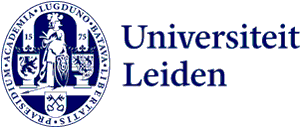1,440 search results for “anti-inflammatory drug” in the Public website
-
Mathematical modelling of adverse outcome pathways
In this project, we aim to develop mathematical models to mechanistically and quantitatively predict the dynamics of cellular stress pathway activation and its relation with toxic effects when cells are exposed to various toxicants.
-
Pharmacy
The Pharmacy research group focusses on the development of predictive models to improve clinical drug efficacy and safety. We are moreover strongly involved in the Master specialisation of Pharmacy at Leiden University. We work on clinical problems that require further mechanistic understanding and…
-
Medicinal Chemistry
The mission in this division, headed by Laura Heitman, is to design and synthesize novel and better ligands for drug targets. Drug discovery is a lengthy but inspiring adventure. It is often an interplay between academic institutes and pharmaceutical industry, in which scientists at university develop…
-
Career prospects
In the Master’s programme Research in Bio-Pharmaceutical Sciences of Leiden University you are trained for a scientific career in drug research and development.
-
Unfolding the regulation of stress response pathways upon liver injury
Drug-induced liver injury (DILI) is one of the main reasons for drug attrition during pre-clinical and clinical phases of drug development as well as for drug withdrawal post-marketing.
-
Antiviral Pharmacology
The focus of the Antiviral Pharmacology group led by Anne-Grete Märtson is optimizing antiviral therapy for different viral infections by conducting clinical trials and using innovative computational and dynamic laboratory methodologies.
-
Career prospects
In the Master’s programme in Bio-Pharmaceutical Sciences of Leiden University you are trained for a scientific career in drug research and development.
-
Career prospects
In the Master’s programme in Bio-Pharmaceutical Sciences of Leiden University you are trained for a scientific career in drug research and development.
-
Microvasculature in Microfluidics: matching complexity with compatibility
In vitro disease models play a fundamental role in drug research. They enable the systemic identification and validation of disease mechanisms and the discovery of possible drug targets. However, more than often, drug candidates that are identified in vitro fail in the later clinical stages of drug…
-
Inhibitor Selectivity: Profiling and Prediction
Less than 1 in 10 drug candidates that enter phase 1 clinical trials actually gets approved for human use.
-
Vision
The Pharmacy research group focusses on the development of predictive models to improve clinical drug efficacy and safety. We work on clinical problems that require further mechanistic understanding and strive for ultimate benefit to patients.
-
PKPD and disease modelling in therapy development for amyotrophic lateral sclerosis (ALS)
We aim to gain a better understanding of the natural disease progression of ALS in order to improve clinical trial design and analysis and to support drug discovery and clinical development of new drugs.
-
Molecular Physiology
Molecular Physiology is a research group at the Leiden Institute of Chemistry dedicated to the design, synthesis and application of chemical tools to study important biological and biomedical questions. The group is headed by Prof. Dr. Mario van der Stelt and includes the research lines of Assistant…
-
Engineering innate immunity for therapy
Immune system defends our body against pathogens and cancerous cells, but excessive immunity can in turn lead to tissue damages and diseases. For example, scratching the surface of the eye ignites an immune response that aims at preventing infection but can also lead to edema, angiogenesis and eventually…
- About this minor
-
Illuminating N-acylethanolamine biosynthesis with new chemical tools
In this thesis, the discovery and optimization is described of chemical tools to study the N-acylethanolamine (NAE) biosynthetic pathway.
-
Cancer chess: molecular insights into PARP inhibitor resistance
The clinical potential of applying synthetic lethality to cancer treatment is famously demonstrated by the BRCA1/PARP1 paradigm: a tumor specific defect in BRCA1 – a component of the DNA double-strand break (DSB) repair pathway homologous recombination (HR) – results in a remarkable sensitivity to PARP1…
-
In vivo modelling of Ewing sarcoma in zebrafish
Promotores: Prof.dr. P.C.W. Hogendoorn & Prof.dr. H.P. Spaink, Co-promotor: Dr. B.E. Snaar-Jagalska
-
Laura Heitman nominated for Prix Galien
Laura Heitman of the Leiden Academic Center for Drug Research (LACDR) has been nominated for the Prix Galien Research Award. This important pharmaceutical prize honors young, prominent researchers whose scientific research is of great importance for fundamental or clinical drug research.
-
Modeling interactions to unravel biomarkers for disease progression and treatment response
The aim of this project is to explore the use of statistical interaction models to quantify cross-omics and omics-drug interactions in large-scale clinical and experimental datasets
-
Strategy
The research area of this division is focused on the development of novel therapeutic modalities and novel concepts in early drug discovery, in order to better predict ligand-target interactions.
-
Vision and Mission
The need for novel drugs as well as innovations in their development and application is as urgent as ever. Below we present our vision , mission, and our key research areas.
-
Prediction of human (CNS) target site concentrations in health and disease
Prediction of human (CNS) target site concentrations in health and disease In the vision of Prof. de Lange we will only be able to predict human (central nervous system, CNS) target site concentrations and effects if we perform systematic, condition-dependent, integrative, and strictly quantitative…
-
Art of Captivity / Arte del Cautiverio
Art of Captivity / Arte del Cautiverio tells a compelling story about Central America's drug war through a series of rich photographs. The book, which is entirely bilingual in English and Spanish, focuses on Guatemala, which has become the primary point of transit for cocaine produced in the Andes and…
-
Pharmacodynamics of analgesics and sedatives in neonates and infants
In neonates and infants, body size, enzyme pathways, and expression and function of receptors and (target) proteins are still developing.
-
Career prospects
After graduation you have a lot of opportunities: academics are highly sought after in Dutch secondary education or mbo teaching. You can also aim for a management position or work as a researcher within the field of Life Sciences.
-
Strategy
The Division of Systems Pharmacology and Pharmacy (SPP) aims to develop precision medicine approaches to characterize and predict variation in treatment response and enhance translational drug development strategies.
-
Targeting the adenosinergic system
Adenosine is an endogenous ligand which exerts its action by activating adenosine receptors (ARs), while its circulating levels are controlled via a variety of mechanism and proteins, amongst others the equilibrative nucleoside transporters (ENTs).
-
Phenotypic screening with 3D cell-based assays
Traditional drug discovery approaches have been hampered by (in vitro) cell-culture models that poorly represent the situation in the human body.
-
Unraveling the drivers of antimicrobial pharmacokinetic variability in individuals with obesity and hospitalized patients with multimorbidity
Obesity may alter how a person absorbs, distributes, metabolizes or excretes medication. This thesis describes how obesity affects drug levels in the blood for antimicrobial agents, such as ciprofloxacin and fluconazole.
-
Student projects
Are you looking for a research project?
-
Patient-derived models of breast cancer: a breakthrough story of the duct
To improve treatment of breast cancer patients it is important to understand all stages of breast cancer from initiation to in situ disease and progression to invasive disease. In this thesis we use intraductal injections of patient derived tissue to model ductal carcinoma in situ and invasive breast…
-
Laura Heitman appointed as Professor of Molecular Pharmacology
As of 1 November, Laura Heitman has been appointed full Professor of Molecular Pharmacology at the Leiden Academic Centre for Drug Research (LACDR). Heitman has been working on the understanding and improvement of drug-receptor interactions in early drug discovery. ‘My ultimate aim is to make medicines…
-
Development of novel anti-cancer strategies utilizing the zebrafish xenograft model
In this thesis, we will utilize embryonic zebrafish tumour models to understand the interaction between engrafted human cancer cells and macrophages from the host, test drug administration modalities and anti-cancer efficacies of newly-developed PDT and PACT compounds, and test a light-triggered liposomal…
-
Physicochemical analysis of allosteric binding pockets
Supervisor: Gerard van Westen
-
United States
This is an Erasmus+ International Credit Mobility project of Leiden University’s Faculty of Science with University of California.
-
Chemical Probe Facility
The Chemical Probe Facility is part of the Leiden Early Drug Discovery & Development (LED3) center. Activity-based protein profiling (ABPP) is one of the pillars of chemical biology. ABPP determines the activity of entire protein families in living cells and tissues under physiological conditions, such…
-
Bio-Pharmaceutical Sciences (MSc)
The master’s programme of Bio-Pharmaceutical Sciences at Leiden University examines the research area of bio-pharmaceutical sciences and drug research. It offers seven specialisations ranging from BioTherapeutics to Industrial Pharmacy.
-
 Olivier Béquignon
Olivier BéquignonFaculty of Science
-
New resource for the modelling community
The Repository from the Drug Disease Model Resources (DDMoRe) consortium provides a home to a collection of computational models of disease and drug action that have been used in pharmaceutical and/or academic research. This publically available open-access resource will make it easier for researchers…
-
Novel Chemical Modalities
The Novel chemical modalities research group is headed by Assistant Professor Sebastian Pomplun. Sebastian started at the division of Medicinal Chemistry within the LACDR in September 2021. His lab develops technologies for the discovery of novel chemical modalities that can address challenging drug…
-
Brünle Lab / Structural Biology of GPCRs
Steffen Brünle's group investigates G protein-coupled receptors (GPCRs). These essential membrane proteins are prime targets for therapeutic drug development in disease and cancer treatment.
-
European Lead Factory
The European Lead Factory has been created with the ultimate goal to develop lead drug candidates to address neglected diseases including bacterial infections, psychiatric disorders and oncology.
-
Concepts and applications for evidence-based dosing in morbidly obese patients before and after weight loss surgery
Promotor: C.A.J. Knibbe, Co-promotores: H.P.A. van Dongen, B. van Ramshorst
-
Prediction of brain target site concentrations on the basis of CSF PK: impact of mechanisms of blood-to-brain transport and within brain distribution
Promotor: Prof.dr. M. Danhof, Co-promotor: E.C.M. de Lange
-
Systems pharmacology of human neuroendocrine disease entities
An important hormone excreting gland in the human body is the pituitary
-
Targeted biomolecule production for therapeutic use
We aim to develop a drug-delivery method based on the production of biomolecules directly at the target site.
-
Single cell technologies for mechanobiology and mechanopharmacology
Mechanobiology is a major area in biology, however, mechanics is currently a missing element in drug development pipelines. This has led to a high cost for the society. Mechanotoxicity of drugs often appears as a long-term side effect of drugs, and has led to removal of drugs from the market. Furthermore,…
-
More effective blocking of CCR2 receptor
The discovery of new medicines is a tedious and lengthy process. On average, over 10,000 molecules need to be studied for one to become a drug and reach the patient. Part of that process are the very costly clinical trials in humans, and candidate drugs often fail due to side effects or lack of efficacy.…
-
New techniques for tuberculosis treatment
About nine million people worldwide contract tuberculosis each year. Research into new treatment for this disease has received fresh stimulus with more efficient techniques and a new understanding of how the tuberculosis bacteria works.
